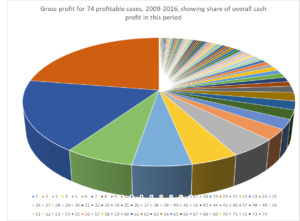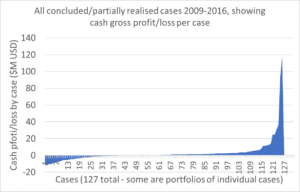Sydney Airport: A Safe, Growing and Inflation Protected Asset That’s Leveraged to the Hilt
Today’s initial interest post really stretches the definition of “overlooked stock”. I’m going to be talking about Sydney Airport. This is one of the 20 to 25 biggest public companies in Australia. It has a market cap – in U.S. dollar terms (the stock trades in Australian Dollars) – of about $13 billion. It also has a lot of debt – including publicly traded bonds. So, not what you’d normally consider “overlooked”. On the other hand, Andrew and I have a couple standard criteria we use (low beta and low share turnover) to judge whether a stock might be overlooked. And Sydney Airport happened to score just barely well enough on these two measures of “overlooked-ness” that it wasn’t automatically eliminated by our screens. For this reason, I left the stock on a watchlist that went out on our email list. While a lot of people mentioned the stock definitely wasn’t overlooked – a lot of other people also mentioned they’d like to hear my thoughts on the stock. So, here they are.
Sydney Airport was suggested to me by my former newsletter co-writer Quan Hoang. He’s from Vietnam originally. And he’s now spent time in Australia. He was looking at stocks and sent me over some financial data of Sydney Airport. A few things jump out about this company immediately. One: it pays out basically everything it can afford to in dividends. Two: it uses a high amount of debt (close to 7 times Net Debt/EBITDA – at one time that number was closer to 11 times Net Debt/EBITDA). However, this isn’t a distressed company in any way. The debt is spaced out – about half of it matures within the next 5 years and the other half after the next 5 years. The bonds are rated by Moody’s and S&P. Sydney Airport intends to maintain an investment grade rating. That’s usually not easy when you have well over 6 times Net Debt / EBITDA. But, this is an airport.
The problem with the debt here is not solvency risk. It’s that the stock price with the debt added – so, the enterprise value relative to various earnings power measures – creates a pretty high future growth hurdle that needs to be cleared. On a dividend yield basis, the stock looks cheap. It yields 4.3%. However, you need to be careful with that number. Consider, for example, Vertu Motors in the U.K. It also yields 4.2%. But, instead of having more than 6 times Net Debt / EBITDA – it has basically no net debt. It also pays out only about 1/3rd of its earnings as dividends. I’m not saying Vertu Motors is a better stock than Sydney Airport – though, at this point, I do own Vertu and don’t own Sydney Airport – but, I am saying that it’s a lot easier for Vertu to cover its dividend and grow it over time than it is for Sydney Airport. Basically, if Sydney Airport doesn’t want to increase …
Read more
 Stephen Gamble, writer and analyst, 12th October 2019.
Stephen Gamble, writer and analyst, 12th October 2019.
